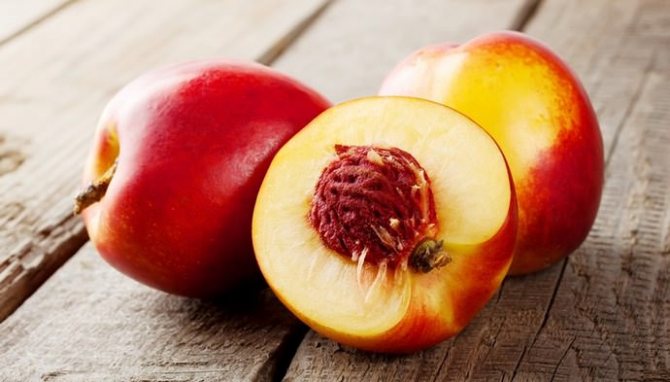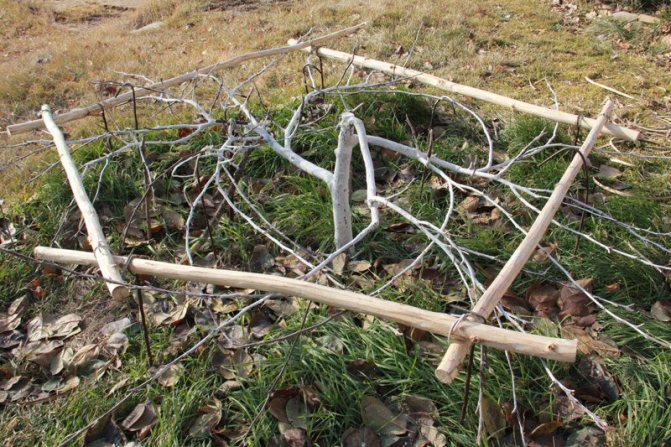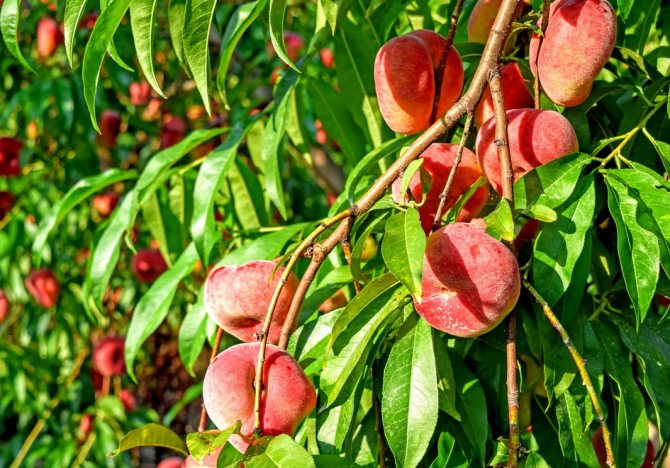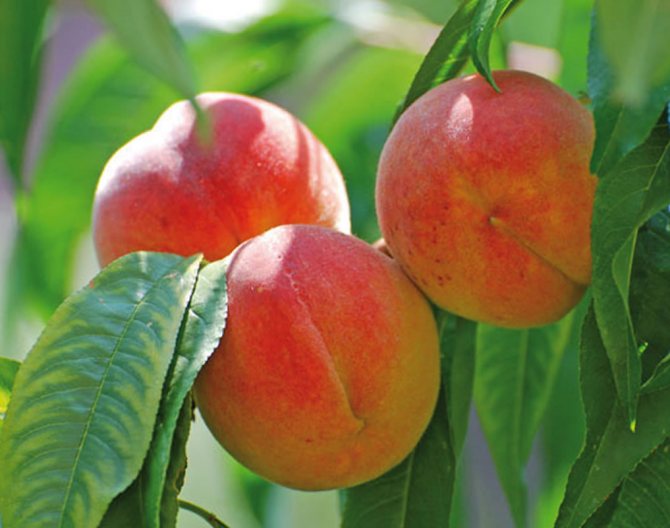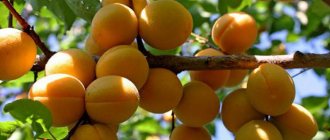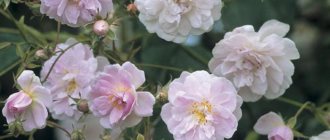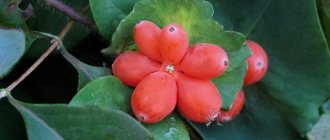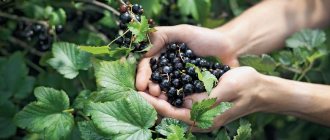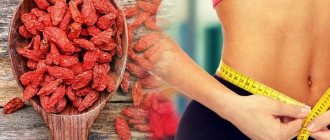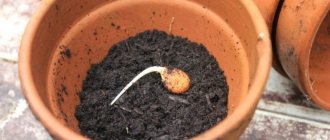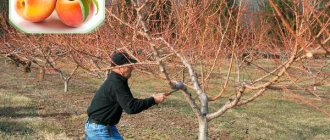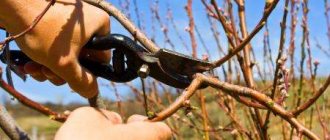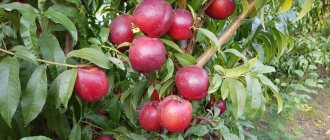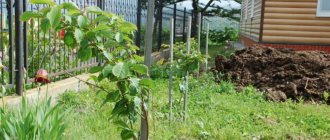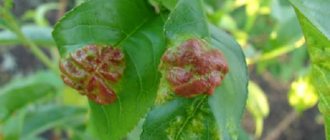The best peach varieties for Belarus. All offers in the category Peach seedlings
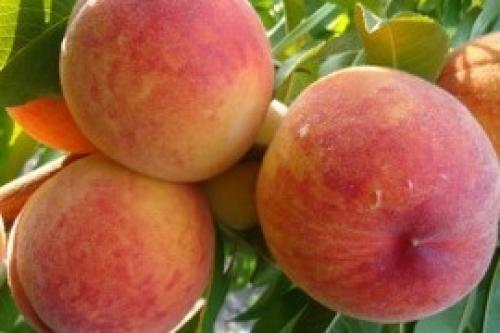
In our nursery you can buy peach seedlings wholesale and retail with delivery across Belarus. Seedlings are delivered free of charge when ordering more than 500 pieces. The SultanSad nursery is located in the Samokhvalovichi agro-town of the Minsk region and we offer to buy only the seedlings of our own production.
We sell annual peach seedlings of the best varieties of the world selection, which are in great demand among amateur gardeners and have great potential if the garden is laid with high-quality seedlings.
The advantage of our peach seedlings!
Our peach seedlings are grown under the personal supervision of the nursery owner using modern nursery technologies and have the following advantages:
- The seedlings grown by us have undergone a full variety study and selection in various climatic zones of Belarus and are distinguished by high winter hardiness and resistance to diseases.
- all peach seedlings have documents confirming the high quality of planting material and certificates of the State Seed Inspection for Quarantine and Plant Protection;
- we carefully follow the cultivation techniques and monitor the phytosanitary situation in the nursery fields;
- mother plants that we use are purchased from the originators of the variety;
- we monitor all new varieties that are highly winter-resistant, suitable for cultivation in our climatic conditions and are guaranteed to give a consistently high yield;
- open-root seedlings are available (in containers);
- all seedlings are grown on rootstocks of their own production (semi-dwarf VPK 1).
Peach varieties are presented in our catalog. The assortment includes varieties of different ripening periods and for every taste, fast-growing, with high winter hardiness and disease resistance. The product page contains extensive descriptions of varieties and recommendations for their cultivation.
You will always get by growing peach seedlings and getting high yields in the garden.
Payment for seedlings
We offer to buy peach seedlings for cash and bank transfer at very attractive prices wholesale, small wholesale and retail with all accompanying documents
Growing peach seedlings on order:
Our nursery is ready to conclude an agreement with farms of various forms of ownership for the cultivation of any number of peach seedlings under the order for the MIC 1 rootstock.
When growing peach seedlings under the order, depending on the batch size, we make attractive discount systems
We invite wholesale buyers and amateur gardeners to mutually beneficial cooperation!
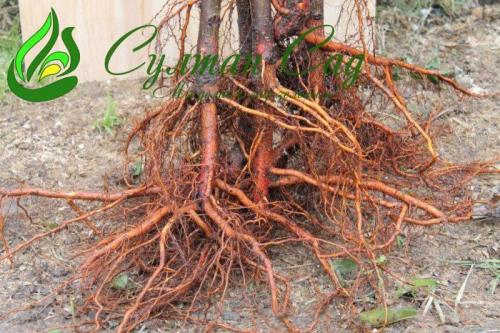

the root system of peach seedlings on the VPK 1 rootstock in the SultanSad nursery, Minsk region.
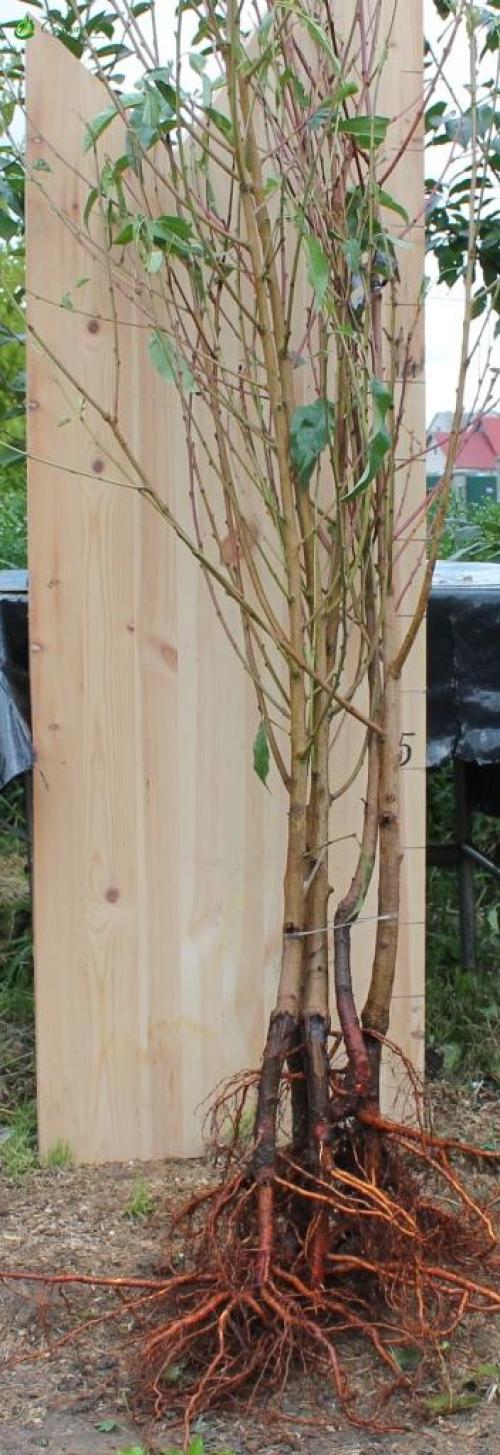

Aboveground part of annual peach seedlings on a semi-dwarf rootstock VPK 1 in the SultanSad nursery, Minsk region.
Landing
- Before planting, the open roots of the seedlings are immersed in water for 2-3 hours, and then dipped in a clay chatterbox. Seedlings in containers are watered, then they are easily removed from the container along with a clod of earth.
- A peg is driven into the center of the landing pit for support. Place seedlings and spread the roots if they are open.
- The roots of the seedlings are covered with soil, the soil is carefully tamped, watered well and tied to a support.
- The root zone is mulched with sawdust, dry grass or fallen leaves.


Taking care of peach trees in the Moscow region is quite simple. All recommendations should be followed in a timely manner, and then enjoy the harvest of sweet and juicy fruits.
Watering
The first years of life, seedlings must be watered regularly. Mature trees require 40-50 liters of water per tree. In dry summer weather, watering should be increased. It is necessary to monitor the condition of the soil, excessive watering can harm the tree. Watering is stopped 10 days before the fruits ripen; in dry weather, the crown is sprinkled.
Regularly and in a timely manner, it is necessary to remove weeds, loosen and mulch the root zone using sawdust, straw or dry fallen leaves.
Top dressing
For the second season of the tree's life, it's time to start feeding three times per season. In the spring, they are fertilized with nitrogen complexes. In summer and autumn, the tree needs a predominance of potassium and phosphorus.
Pruning
Sanitary and shaping trims are made in the spring after the shelter has been disassembled. It is customary to break off excess ovaries from a young tree so that the fruits that have ripened in excess amount do not break off the branches with their weight.
Winter-hardy peach varieties in Belarus. Peach
| peach wondrous Peach Wonderful. Large-fruited variety of peach Divny belongs to mid-season varieties. The color is yellow-red. The size of the fruits with good care and no crop overload reaches 100g. One of the most winter-hardy peach varieties, which is especially important in Belarus. Read more ... |
| peach red haven Peach Red Haven. Fruits are medium and large (72 x 68 x 70 mm), weighing 113-170 g, aligned, rounded-oval, slightly asymmetrical. Fruit pulp is yellow with raspberry veins, medium density and juiciness, very good taste. Fruits are transportable, universal table and canning use. Read more ... |
Peach tree from an experienced manufacturer
Looking to renovate your garden and buy peach trees? Do you need first-class seedlings that will definitely take root and give an excellent harvest? It is better to buy peach seedlings in Belarus in a proven fruit nursery.
The farm "Sad" grows and sells fruit trees and berry bushes for planting and resale in garden centers. Our seedlings are promising varieties of crops, selected over 25 years of fruitful work.
In our catalog you will find strong peach tree saplings of different varieties at retail and wholesale. To make the peach easy to transport and take root better, we carefully pack the plant root system.
Conditions for retail buyers:
- The period for the sale of seedlings is March-May, September-December.
- Possibility of self-delivery of plants.
- Delivery by courier to the door in Belarus
- Sending by mail to any region of the Republic of Belarus
- Delivery of TC across Russia and Kazakhstan to points of issue
Conditions for wholesale buyers:
- The price is negotiable.
- Coordination of delivery times.
- The implementation period is from March to May and from September to December.
Buying peach tree seedlings from the Sad farm, you get:
- 100% pure crop variety;
- tenacious and healthy peach tree seedlings;
- consultation on the peculiarities of caring for a southern tree;
- packed planting material for safe transportation.
Buy peach seedlings in the garden nursery! You will buy excellent peach trees from us, which will give a rich harvest.
Diseases and pests
Peaches are prone to diseases:
- fruit rot;
- powdery mildew;
- moniliosis;
- clotterosporiosis.
In order to prevent the appearance of diseases, the tree must be treated in a timely manner with Bordeaux mixture, colloidal sulfur, copper-containing fungicides.
Of the pests, peaches often infect:
- aphid;
- ticks;
- fruit striped moth;
- weevils;
- eastern moth.
In order to prevent their appearance in autumn, it is necessary to collect fallen leaves and remove weed residues, carry out sanitary pruning, whitewash the trunks and skeletal branches of the tree, install trapping belts, treat the garden with insecticides and fungicides.
Winter-hardy peach varieties. Care
What is the Winter-hardy peach? This tree or bush is 3-4 m high. Grown from a stone, the peach begins to bear fruit in the 3-4th year of life. The fruits are yellow with a blush, very tasty, the flesh is creamy, the stone is almost free, ripens from mid-August to mid-September (in our area). Winter-hardy peach trees are very overloaded with the harvest, forming fruits weighing 60-80 g, and if part of the ovaries (even half) are removed, when they are the size of a cherry, they will be larger - up to 120 g and even up to 200 g (especially on young trees with good agricultural technology). Removing part of the ovaries does not affect the overall yield. From a 10-15-year-old tree or bush, you can collect up to 10 buckets of fruit. For a month you can enjoy delicious fruits, preserve, make jam.
I practically do not cut the peach and do not specially form the crown. In the spring, when the buds are already awakening, I remove the dried-up, gum-damaged, frozen twigs (I cover the sections larger than 1 cm with garden pitch, oil paint or clay in half with a mullein). In plants formed by a bush, I cut out aging trunks at the level of the soil, in return I leave a part of young growth (so much that the branches are well lit and freely blown by the wind). Branches and trunks (with a bush form) can break under the weight of the fruit and in strong winds, so it is worthwhile in advance, if possible, to tie the bushes into loose bunches, as well as prepare and install props where necessary.
In the summer, at the end of June - beginning of July, I definitely carry out pinching - I pinch off the tips of young twigs that have grown 30-40 cm in length. They are still grassy and easily pinched off with your fingers, and the trunks when grown by a bush are easy to tilt. I process each bush in about 20 minutes. The pinched twigs ripen completely by winter and do not freeze, flower buds are laid on them more intensively. Gardeners looking to shape the peach can prune in April.
Peach is thermophilic and photophilous, relatively drought-resistant, but with a lack of moisture it needs watering. To do this, I make a deep groove around the trunk with a hoe (about 1.5 m in diameter) so that water does not spread, and I water the tree with mulch, part of the water flows into the groove. When the water is absorbed in it, I water it a second time. When this water is also absorbed, I water it for the third time and after absorbing the water I fill the groove with dry soil. A peach tree or bush takes about 10 buckets of water. With two waterings per season, in early July and early August, the fruits are juicy and tasty, of normal size and good color. Familiar gardeners who had the opportunity to water also got an excellent harvest of peaches. For those who did not water, the peaches were massively showered with green, only a small number of them ripened, while they had a mediocre taste.
note
Often in the spring, inexperienced gardeners complain that the plants are frozen. But in most cases, they did not freeze, but dried out from dehydration of branches and trunks due to frost. Indeed, in winter, plants breathe and evaporate water. With a lack of it in the soil, there is no it in the plants - naturally, they dry out. At the end of October-November, if there is no rain and the soil is not sufficiently moist, it is imperative to carry out sub-winter watering, saturating the ground with water at least to a depth of 40-50 cm.
Trunk circles (up to 1.5 m in diameter) should preferably be mulched with humus, and if not, then with mowed grass, weeds (layer 6-10 cm). Moisture is better preserved under the mulch, a crust does not form after rains and watering. Mulch, gradually decomposing, turns into fertilizer.As it decomposes, I add fresh one. I do the same in a nursery or a school, in which case the plants develop a more powerful fibrous root system. At the end of October - in November, on a fine sunny day, with a special scraper, and in some places with a knife, I clean off the old flaky bark onto a spread film, which I then burn. Then I coat the trunks and bases of the skeletal branches with a thin layer of red clay, diluted with water until thick sour cream, half with a fresh mullein. After the clay has dried, I whitewash with a solution of lime (2-2.5 kg per 10 liters of water), after adding an adhesive to the lipos (a little copper sulfate is also possible). Such whitewashing in late autumn protects the trunks and branches of the skeletal branches from damage from sunburn in winter. This happens most often during thaws in February - March.
Video: "Warming a peach tree for the winter"
After watching this video, you will learn how to properly insulate a peach for the winter with agrofibre.
On the eve of the winter cold snap, you need to cut the crown of the peach tree. Most gardeners adhere to the rule that autumn is the optimal period for removing old, lifeless, damaged by winds, insects, rodents and various diseases of the branches. Crown pruning is carried out from mid-September to mid-October, so that the tree has time to heal "wounds" and recover before the first frost.


Characteristics of the Jelgava peach. Peach "Jelgavsky" 1 piece
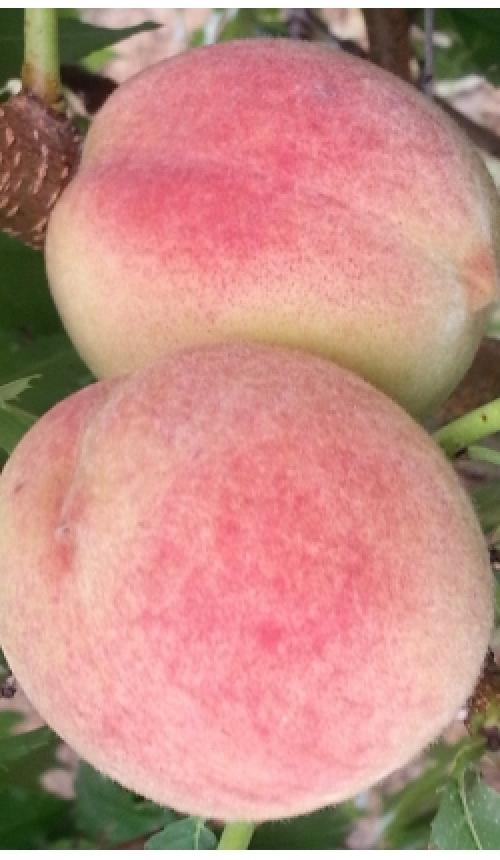

Although the Russian name for peach comes from the Latin Persica, as if indicating the origin of this culture from Persia (Iran), in fact, its homeland is China. In China, it appeared as a botanical species, grew and formed over tens and hundreds of thousands of years of evolution. In ancient China, peach varieties were few in number, but it was this tree that was called a symbol of longevity, chastity and purity. Girls who get married in the spring were given a branch of a blossoming peach tree, and in the summer brides were given its fruit as a symbol of a happy marriage. Peaches come in many different types. They differ in taste, fruit color, type of cultivation, ripening time and many other indicators. Winter hardiness is one of the most important criteria for choosing a variety for growing in temperate and northern regions.
Of course, severe winters can completely destroy not only the future harvest, but also the tree itself, so scientists have bred several frost-resistant peach species. Today, you can easily choose a variety that can grow even in places where summers are cool and winters are harsh.
Gardeners have always strived to grow these juicy, tasty fruits in all regions. The best varieties of peaches have already been bred, corresponding to the annual temperatures of many regions, but breeding work continues and discoveries with new incredible properties await us.
Peaches contain vitamin C, which is known to both adults and children as an excellent support for the immune system. Many trace elements that are so necessary for the proper functioning of the intestines and the body as a whole are found in peach. There is also carotene, which is essential for maintaining good vision and more.
Peach Jelgavsky is a variety of Baltic selection, winter-hardy and drought-resistant, self-fertile. Begins to bear fruit at the age of 2-3 years, but it is better to remove the first flowers.
The tree is weakly vigorous with a rounded crown. Fruits are of medium size, weighing 50-70 grams, round or rounded-oval. The skin is creamy white with a greenish tint on the sunny side with a blurred and striped dull blush, medium pubescence. The pulp is greenish-white, tender to medium density, the fruits are very juicy, with a sweet and sour aftertaste.
The stone is medium in size, weakly fused with the pulp. Fruits ripen in late August and early September.
This is one of the most winter-hardy peach varieties, it has a good recovery ability when freezing after severe winters. Quite resistant to diseases, including leaf curl.It is best to plant on the south side of buildings to protect from cold winds.
Peach is an ancient culture, whose homeland is considered to be northern China. The main plantations of peach are concentrated in the subtropics and warm regions of the Caucasus, European and Asian states. The culture of peaches stepped into the vastness of the southern and some middle regions in the second half of the last century. Currently, there is a real peach boom. Many gardeners prefer peaches over apricots. Peaches are more hardy in spring return frosts. The advantages of a peach include the possibility of obtaining a full-fledged harvest with the inheritance of maternal traits (large-fruited, pulp taste, aroma, etc.) when propagated by seeds. Sweet-sour, honey-sweet peach pulp, delicate and aromatic, is not only tasty, but also curative. These fruits are high in vitamins, sugars, pectin and organic acids, including cinchona, tartaric, citric, and malic acids. Pectins and antioxidants protect the body from aging. High content of B vitamins, A, PP, K, C, E, a fairly large list of minerals, including potassium, magnesium, iron, copper, calcium, sodium, zinc, fluorine, manganese, selenium, silicon, chlorine, phosphorus, aluminum, sulfur, help to resist various diseases, including anemia. Peach juice is prescribed by doctors for anemia and heart rhythm disturbances, gastrointestinal diseases, neurodermatitis, asthma, flu and many other diseases. The iodine contained in peach fruits helps to normalize the thyroid gland, which is responsible for the body's immune system. Peach oil is obtained from the seeds, which is used in the manufacture of cosmetics and medicines.
Description of the plant
The peach belongs to the Rosaceae family. This plant is usually cultivated in the southern regions. The tree grows to a height of about 5-7 m. Peach flowering looks very similar to the flowering of steppe almonds.
From the beginning of flowering to the final ripeness of the fruit, a little more than three months pass. Peach fruits are juicy, fragrant, sweetish in taste, but without sugary. They are pubescent and glossy (nectarines). The shape of the fruit is spherical or slightly oval, weight up to 160 g.
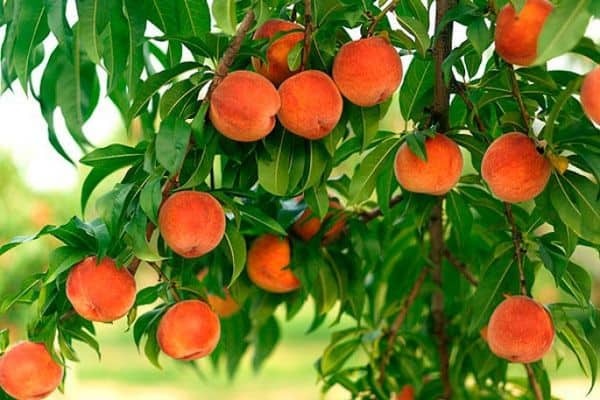

Peach varieties catalog. Peach seedlings
Looking for where to buy peach seedlings in Crimea? offers young fruit trees wholesale and retail. The catalog contains popular peach varieties that stand out for their fertility and special taste.
Many people believe that the peach is a southern crop and are afraid to plant it on their property. However, there are many varieties that take root well and bear fruit even in harsh climates. The main thing is to choose the right type of tree and plant it. With careful care, juicy and fragrant fruits grown with your own hands will delight you every summer.
- For small areas, choose dwarf and semi-dwarf varieties.
- It is advisable to purchase plants from a nursery located in your climatic region.
- Contact specialized centers that have a certificate and other necessary documents.
- After receiving the parcel, carefully inspect the tree, make sure it is not damaged.
- A healthy plant has a well-developed root system, the stem is even and smooth, without extra buds and shoots.
- The optimal number of branches on the crown is 4–5.
- The graft should be 7–8 cm from the root.
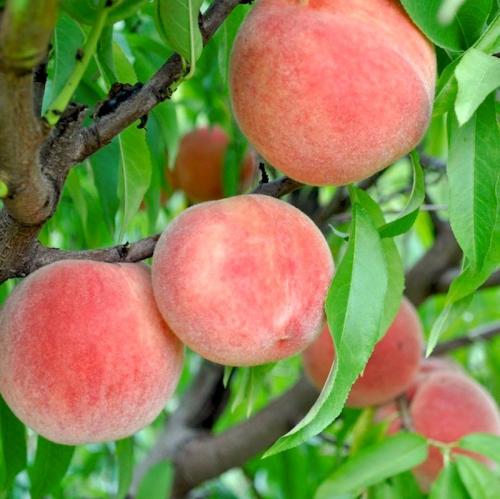

Give preference to frost-resistant varieties. The younger the plant, the better it takes root, so check the age of the seedling with the seller. If you decide to buy peach seedlings in Crimea with mail delivery, pay attention to the following nuances:
Before sending the peach seedlings by mail, the employees of the online store will carefully package the plant so that you receive it safe and sound.
When is it better to plant a peach
Planting time depends on the climatic region. The closer the site is to the south, the more desirable an autumn planting. In Crimea, it is quite possible to plant plants in the fall. With proper care, the first fruits appear in 2-3 years.
In the northern regions, it is better to plant fruit crops in the spring, in the middle lane - both in the spring and in the fall. For spring planting, they usually choose the end of March - April, May is not suitable for planting peaches in the ground.
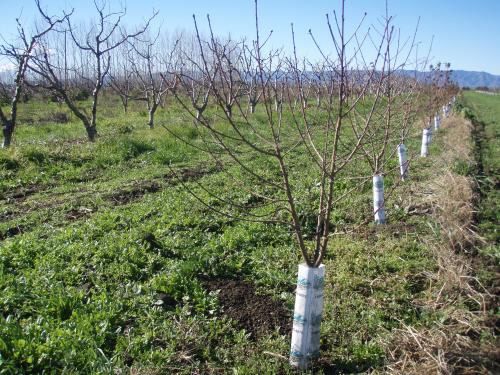

Peach seedlings by mail: rules for planting a young tree
If you decide to buy peach seedlings with mail delivery, choose light and calm areas for planting a seedling, preferably on the south side. The best option is next to the building wall. The wall protects the plant from the cold north wind and will provide additional heat. Make sure that tall trees do not shade the shoot. The distance between green spaces should be at least three meters. Any soil is suitable. The main condition is the presence of drainage. Poor soils are pre-fertilized.
Planting peach seedlings is carried out in several stages:
- Dig a hole 50 x 50 cm.
- Put a layer of fertile soil on the bottom, drive in two pegs that will serve as a support for the seedling.
- Water the plant abundantly after planting.
- Water the plant in two steps the next day.
At the onset of frost, the young tree is covered with a bag.
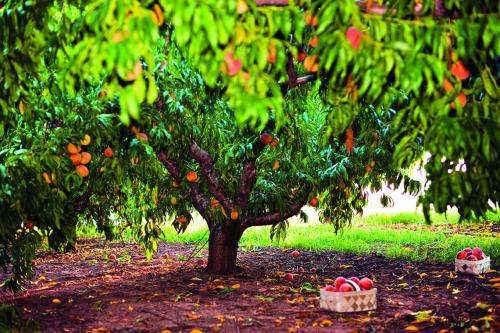

To buy peach seedlings in Russia, select a plant variety in the catalog. Read the product information in detail. Add your purchase to your cart and decide on the delivery method. Delivery across Crimea is carried out free of charge by bus, to other cities of Russia - by trucking companies or by mail.
Current prices for peach seedlings are indicated in the catalog. To find out more detailed information about wood varieties or order conditions, contact the store manager by phone or write.
Features of growing crops
There are some peculiarities of growing peaches in the Moscow region. Compliance with them will save you from unnecessary care and will allow you to collect a rich harvest.
Landing time and place
Peaches are grown in any soil that has good drainage. The best results were achieved on moderately calcareous loamy soil. Planting seedlings cannot be carried out in areas where previously cultivated:
- strawberries;
- alfalfa;
- clover;
- tomatoes.
There should be no nearby:
The selected area should be well lit by the sun, be closed from drafts and cold winds.
Selection and preparation of planting material
For cultivation in the Moscow region, you should choose varieties of peaches bred by local breeders or zoned for this region. It is preferable to buy seedlings from local nurseries. Their age should be from 1 to 2 years. It is these plants that take root best.
The height of a tree suitable for planting is about 1.2 m, and the thickness of the main trunk is 1.5 cm. The buds should be fully formed, and the developed crown should contain 4 branches. The root system of the seedling chosen for cultivation is well formed, does not have external damage and defects, as well as signs of decay or disease. Before planting, it is placed in a growth stimulator for several hours.
Planting scheme and process
Before planting a peach, the soil in the selected area is carefully dug up, weed roots are removed. If the soil is depleted, then fertilizers are applied in advance. The increased acidity is neutralized by adding dolomite flour or wood ash. Saplings are planted according to the scheme 4 x 3 or 4 x 4 m.
A peach planting hole is dug 0.6 m deep, and at least 0.5 m in diameter.On fertile soil, a hole is dug 0.7 x 0.7 m in size.A bucket of water is poured into it. After the moisture is absorbed, set the tree in the hole and gently spread the roots to it, and then cover it with nutritious soil mixture, tamp and water abundantly.
It is advisable to mulch the soil in the peach trunk circle. For these purposes, use:
Selection rules
The climate of the Moscow region is moderately continental, with relatively mild winters and warm, relatively humid summers. It is not too difficult to find a nectarine or peach variety for the Moscow region. It is important to pay attention to the type of rootstock, as well as the ripening period of the variety of this fruit crop.
The best varieties for this region of cultivation are characterized by an early and medium-early period of crop formation, and also have sufficient resistance to low-temperature regimes in winter and late spring frosts. High-quality peach seedlings for the Moscow region, like nectarine seedlings, are recommended to be purchased in nurseries selling zoned varieties.
